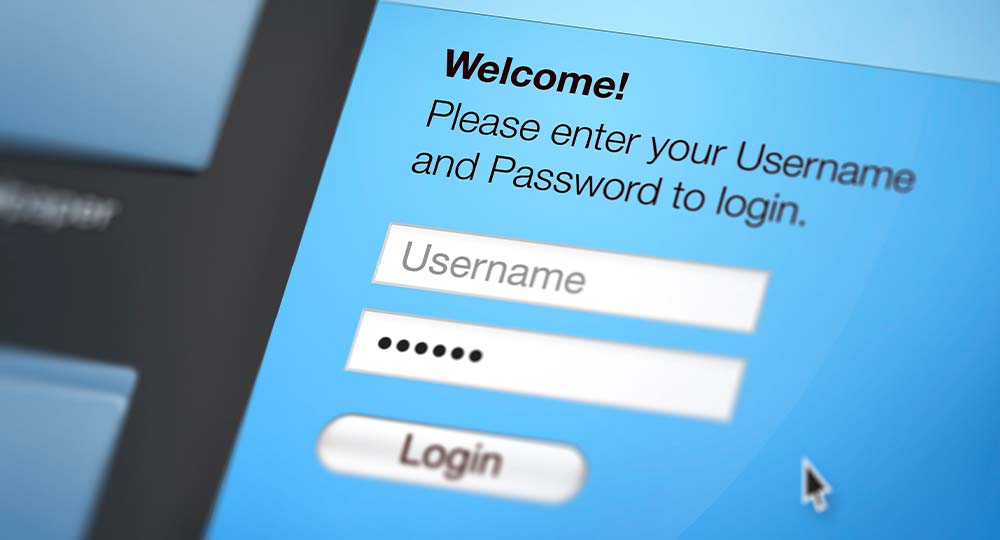Security Tips | May 2, 2025
When it comes to online safety, most people think about their passwords—but your username matters just as much. This guide will walk you through how to create a strong username and password, and develop habits that strengthen your online security.
Tips to Create a Strong Username
Usernames are often visible and reused across platforms. Cybercriminals take advantage of that by launching credential stuffing attacks, where they test known username/password combinations on multiple sites. A strong, unique username helps protect your identity and makes it harder for hackers to gain access—even if your password is compromised.
- Avoid Personal Information: Steer clear of using your full name, birthdate, hometown, or any other easily discoverable personal information. Hackers often scrape public data from social media to guess usernames.
- Make It Unique and Memorable: Combine unrelated words or symbols to create a username that’s both easy for you to remember and hard for others to guess.
Example: JazzForklift32
- Don’t Follow Predictable Patterns: Avoid using sequences like “123,” your birth year, or other common endings in your username. These are among the first combinations hackers will try.
Passwords for Better Online Security
Creating a strong password is just as important as your username—if not more. A well-designed password protects your accounts from brute-force attacks, data breaches, and password-guessing software. Here’s how to build one that stands up to modern threats:
- Use a Passphrase Instead of a Complex String: Modern best practices for passwords favor passphrases—a combination of unrelated words or a memorable sentence—over random characters. Passphrases are easier to remember, yet still very secure when constructed properly.
Example: ZebraRunsLucky47Trees
The key is unpredictability. Avoid using phrases from your personal life (like pets’ names, birthdays, or favorite bands), and stay away from quotes, song lyrics, or common phrases that may be in password databases.
- Create a Long Password: Aim for at least 12–16 characters. The longer your passphrase or password, the harder it is for attackers to crack.
- Avoid Common Patterns or Predictable Tricks: Stay away from keyboard patterns like qwerty123 or asdfgh, and don’t rely on basic substitutions like P@ssw0rd!—hackers are well-equipped to detect these patterns. Instead, choose unexpected word pairings that create a vivid mental image but don’t follow a common theme.
- Use a Personal Sentence Only You’d Remember: You can turn a unique memory or image into a strong passphrase by converting it into a sentence.
Example: “My dog dug 3 holes in the garden” becomes DogDug3GardenHoles
Using these techniques together—long, original, and memorable phrases—will help you create passwords that are both secure and manageable without needing to write them down.
Next Steps After Creating a Strong Username and Password
Creating a strong username and password is only part of staying secure online. These additional habits can help protect your accounts and personal data:
- Don’t Reuse Passwords Across Accounts: Using the same password on multiple sites puts all your accounts at risk if even one is compromised. A password manager can help you generate and store unique passwords for each login, so you don’t have to remember them all.
- Avoid Using the Same Username and Password Together: Even strong passwords become vulnerable when paired with the same username across multiple sites—especially if that username is your email address. If one site is breached, attackers will try the same combination on other accounts, from shopping sites to your email or banking login.
- Turn On Two-Factor Authentication (2FA): 2FA adds an extra layer of protection by requiring something you know (your password) and something you have (like your phone). It’s one of the simplest and most effective tools to stop unauthorized access—even if your password is leaked.
- Log Out Occasionally—Even If You Use Biometrics: Biometric logins (like Face ID or fingerprint recognition) are convenient, but staying permanently logged in can create blind spots in your account’s security. Logging out occasionally helps you:
-
- Apply updated security settings: Some platforms require a new login to activate new protections.
- End old sessions: This removes access from devices you no longer use or recognize.
- Stay alert: Logging out and back in makes you more aware of which accounts you’re using—and who may be using them.
Tip: Log out and back in at least once a month, especially on apps related to banking, email, cloud storage, or medical accounts.
Protecting Your Online Accounts Starts Here
Your username and password are the first line of defense for your online accounts. By avoiding personal information, creating strong, unique credentials, enabling 2FA, and occasionally refreshing your logins, you significantly reduce your risk of being hacked.
Want to take your online safety even further? Visit our Security Tips page for more ways to protect your personal and financial information.








 Email
Email